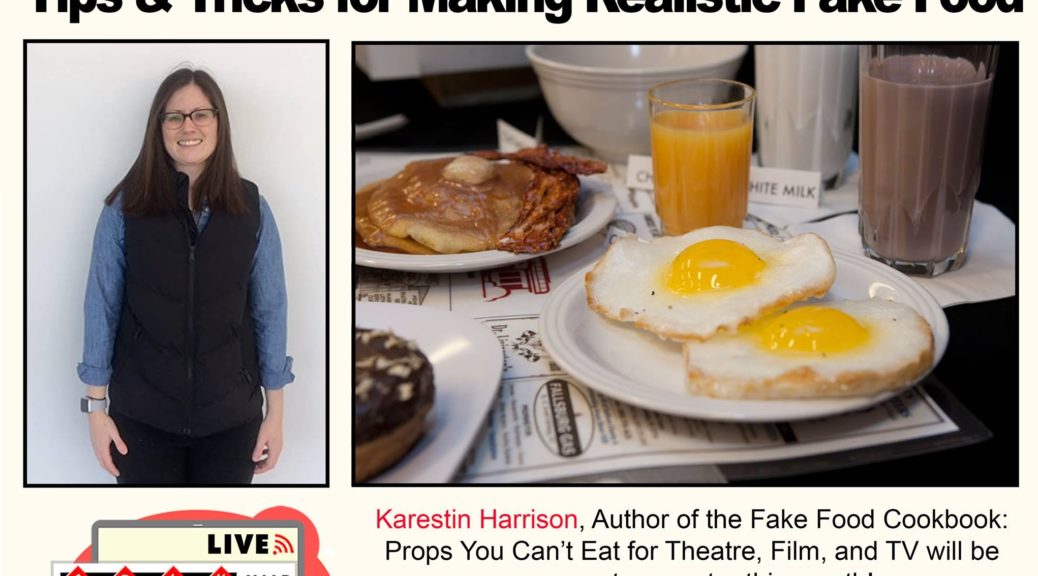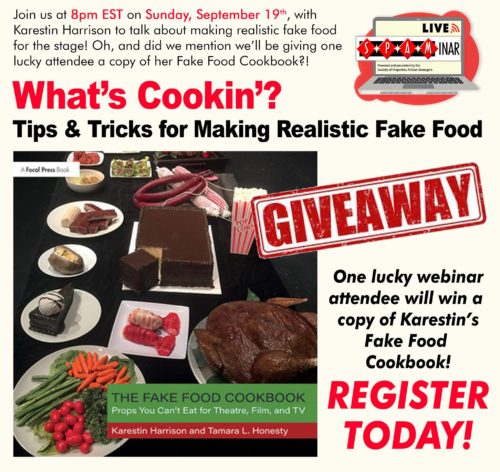One lucky webinar attendee will win a copy of Guest Presenter Karestin Harrison’s book: The Fake Food Cookbook: Foods You Can’t Eat for Theatre, Film and TV!
During our hour long webinar, Karestin will talk us through how to use various materials to create fake food that looks so good it’ll make you hungry. She’ll share materials and resources with us, sharing with us different craft mediums that can be found at the local craft store as well as higher end products that can be ordered from ROSCO.
When: Sunday, September 19th at 8pm EST
Where: From the comfort of your home!
REGISTER here: https://bit.ly/WhatsCookinReg
We are once again requesting pay-what-you-can donations to support this S*P*A*Minar programming. All money collected will be used to offset webinar operation costs with additional funds going to our annual grant program for early career prop people. Suggested donation amount is $3.
Donations can be made via PayPal Money Pool here: https://bit.ly/SPAMinarMoneyPool
Registration will remain open until 6pm EST on September 19th and a link to the Zoom S*P*A*Minar session will be sent out to all registered attendees 1 hour before the start of the webinar.
All S*P*A*Minars will be recorded, and the video will be shared on YouTube the week following the event.


